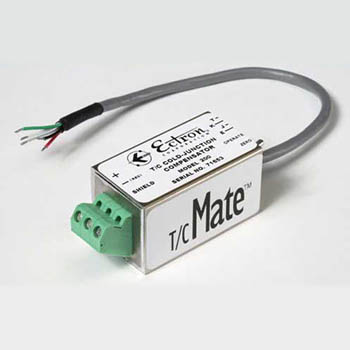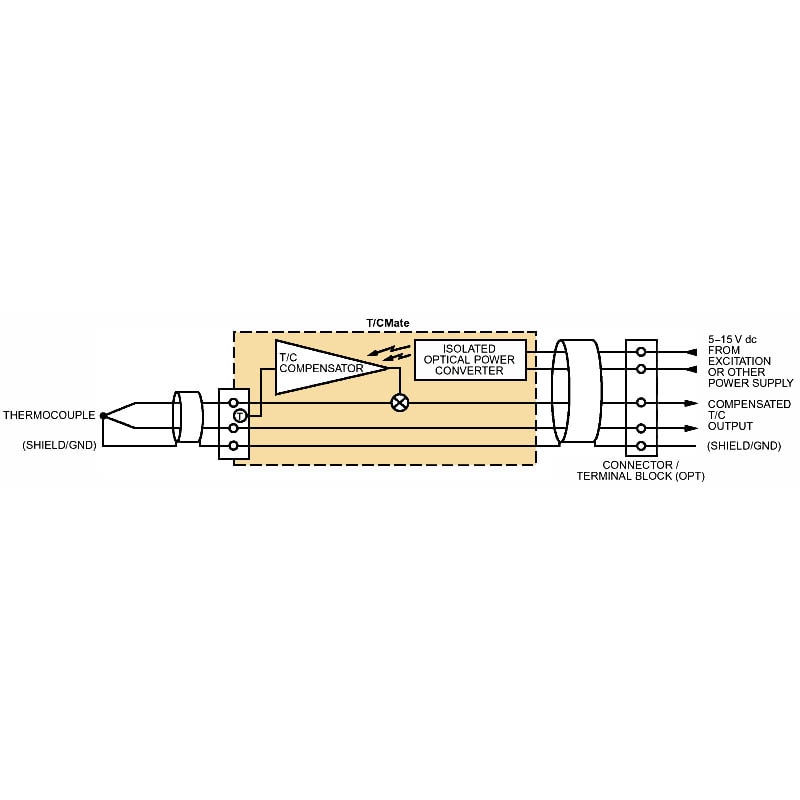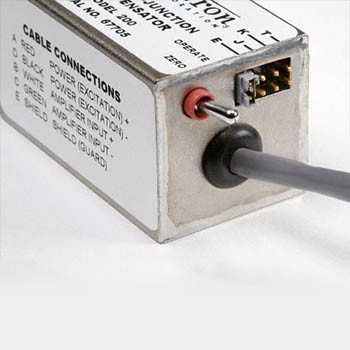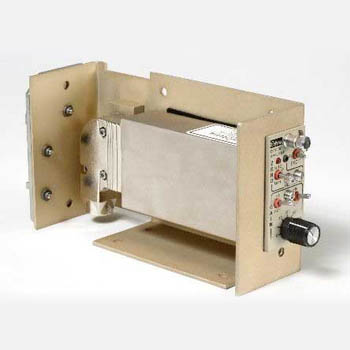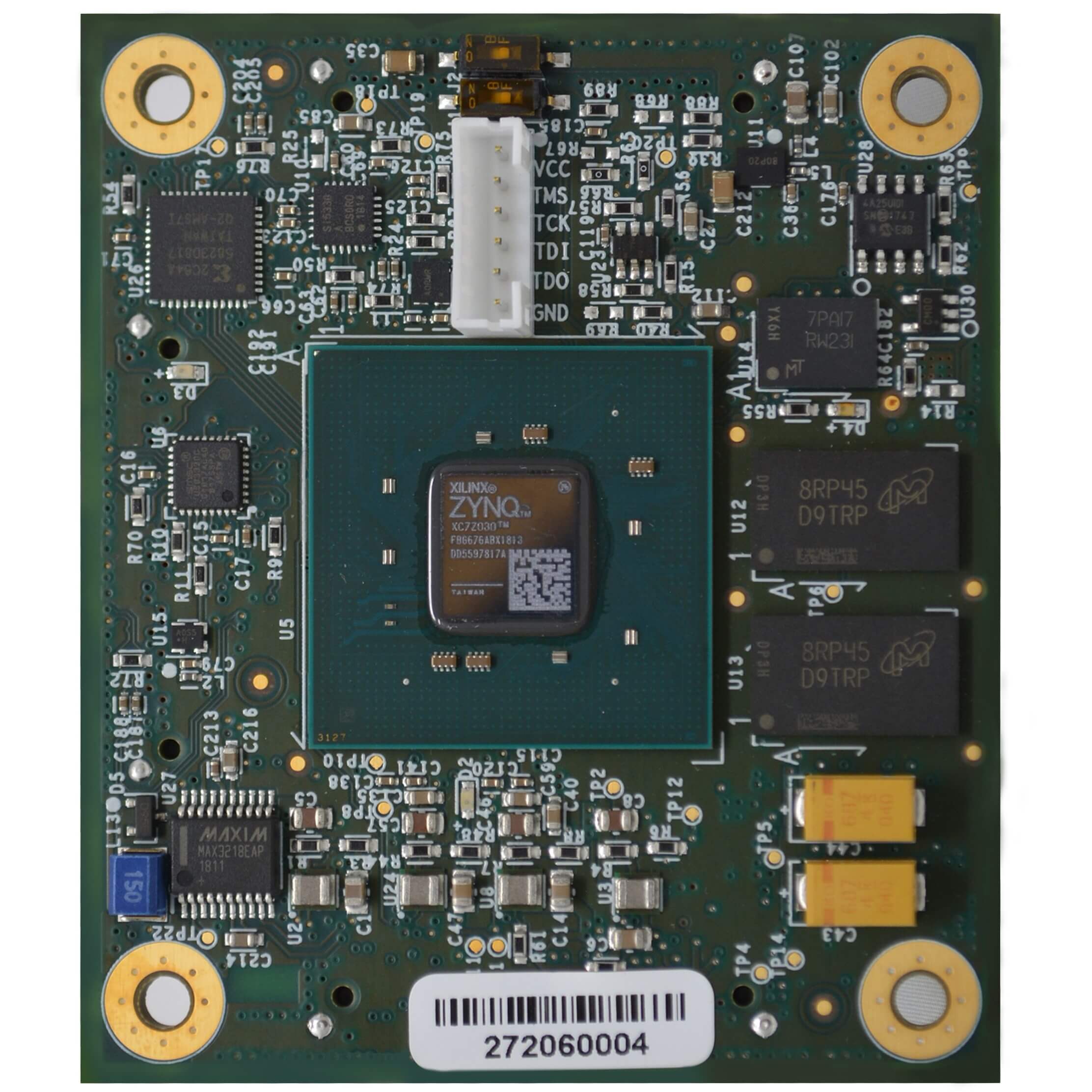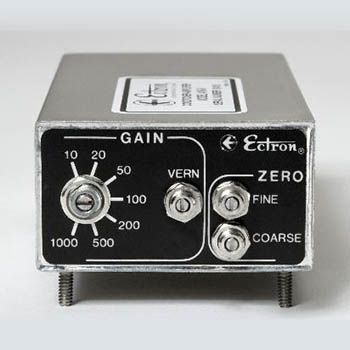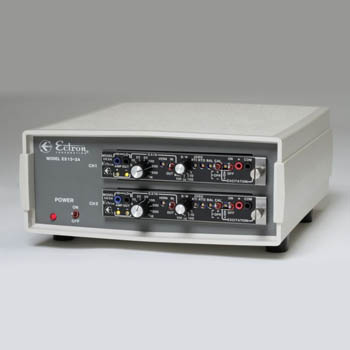DESCRIPTION
The Ectron T/CMate Model 200 Thermocouple Cold-Junction Compensator allows any following instrumentation amplifier to be used as a thermocouple amplifier with thermocouple input. Ectron conditioner-amplifiers are ideal.
The T/CMate accepts thermocouple signals, provides precision cold-junction compensation to copper wires, and adapts the signal for amplification. A jumper allows selection of the appropriate compensation for four thermocouple types.
A unique optical isolator provides power for the compensation circuitry from any 5 V dc to 15 V dc power source, eliminating the need for batteries. The strain-gage excitation supply available from Ectron conditioner-amplifiers provides ideal power. When connecting to computer I/O cards, the computer’s 5 V or 12 V supply voltages can be used.
OPERATION
When thermocouple signals are amplified or converted to digital signals the T/C wires must first be connected to copper wires (amplifiers using T/C wires haven’t yet been invented). Where the T/C to copper wires connect, unwanted T/C junctions are formed. To avoid these errors a “Cold Junction Compensator” (CJC) must be used.
Historically, CJC devices have taken several forms:
An ice bath (slurry of pure water and ice).
A thermoelectrically cooled chamber.
A battery-powered bridge network that includes temperature correction.
The Ectron T/CMate is similar to Type 3, but instead of a battery almost any nonisolated power supply from 5 V to 15 V can be used. Within the T/CMate isolation between the low-level T/C signals and the power supply voltage is extremely high. Any number of T/CMates can be powered by a single power supply.
The T/CMate does not linearize the signal. Linearization to match thermocouple conversion characteristics is most accurately accomplished by a computer following a linear analog amplification of the actual thermocouple output.
SPECIFICATIONS
Thermocouple types: E, J, K, and T selectable by use of plug jumper.
Input Thermocouple Connection: Two thermocouple wires plus shield attach to a terminal block assembly.
Dc Power: 5 V dc to 15 V dc regulated at 50 mA nominal, usually supplied by the amplifier’s excitation supply but can be any supply.
Isolation Between Signal and Input Power: 100 MΩ and 75 pF. Breakdown voltage ±300 V.
Accuracy (including ambient variation of 25°C ±25°C): Better than ±1°C for all thermocouple types.
Reference Temperature: 0°C (32°F)
Zero/Operate Switch: A toggle switch shorts the compensated T/C output to simplify zero adjustment of the following amplifier.
Size: 30 mm H x 30 mm W x 51 mm L (1.15” H x 1.15” W x 2.005” L) plus 165 mm (6.5”) cable.
Weight: 65 g (2.3 oz) plus connector if installed.
Output: Standard output for the Model 200 is a 165 mm (6.5”) cable with wires for the compensated T/C output signal plus two leads for input power. It has soldered ends for terminal block or other connection.
FEATURES
- Precise compensation for type E, J, K, and T thermocouples
- Signal isolated from compensation power
- Use any instrumentation amplifier
- No batteries required
- Eliminate long-distance thermocouple wire
OPTIONS
- Model 200 – No connector provided
- Model 201 with PT06A-10-6P[SR] connector
ADDITIONAL INFORMATION
| MODEL | Model 200 – No connector provided, Model 201 with PT06A-10-6P[SR] connector |
|---|


